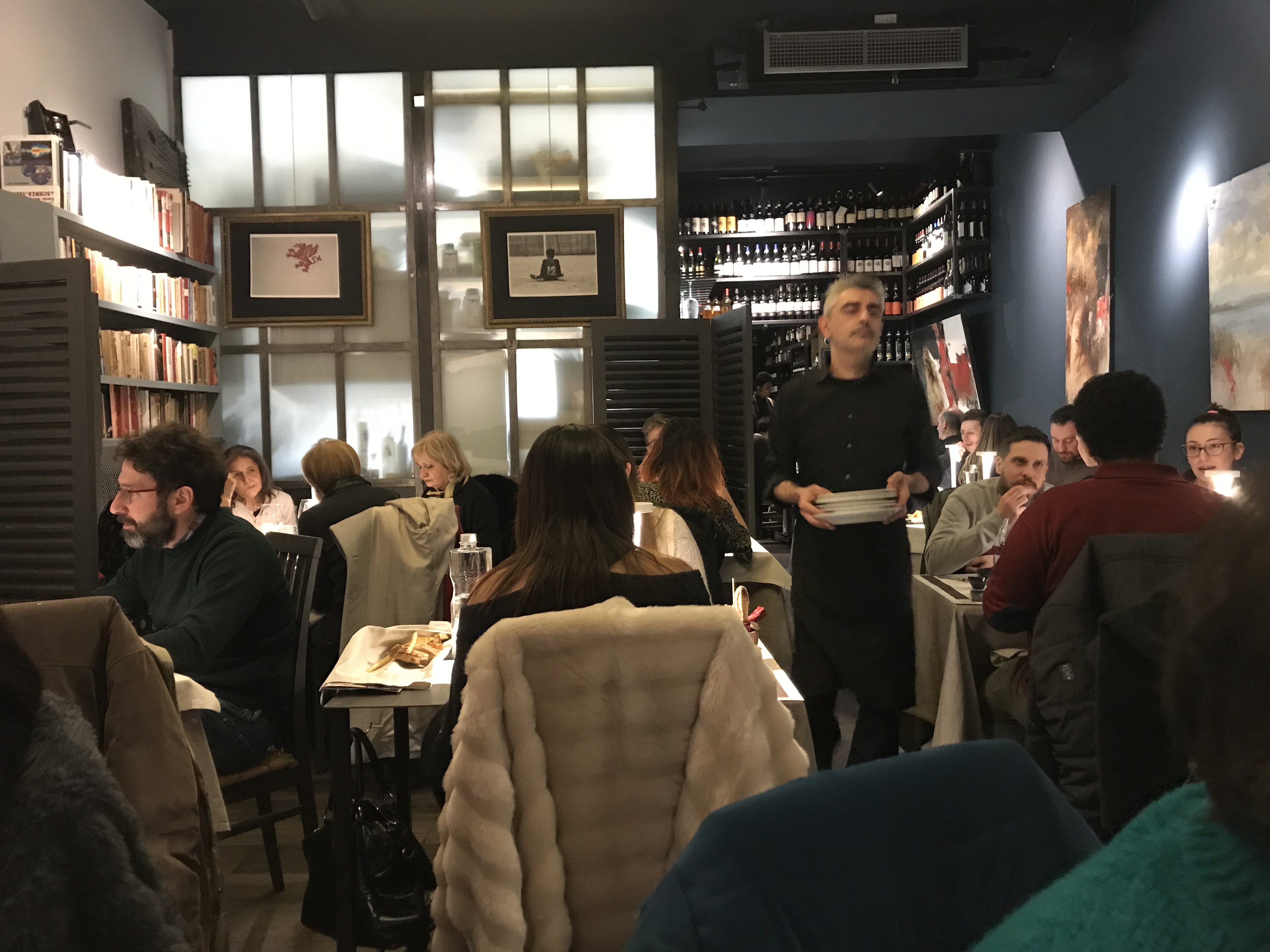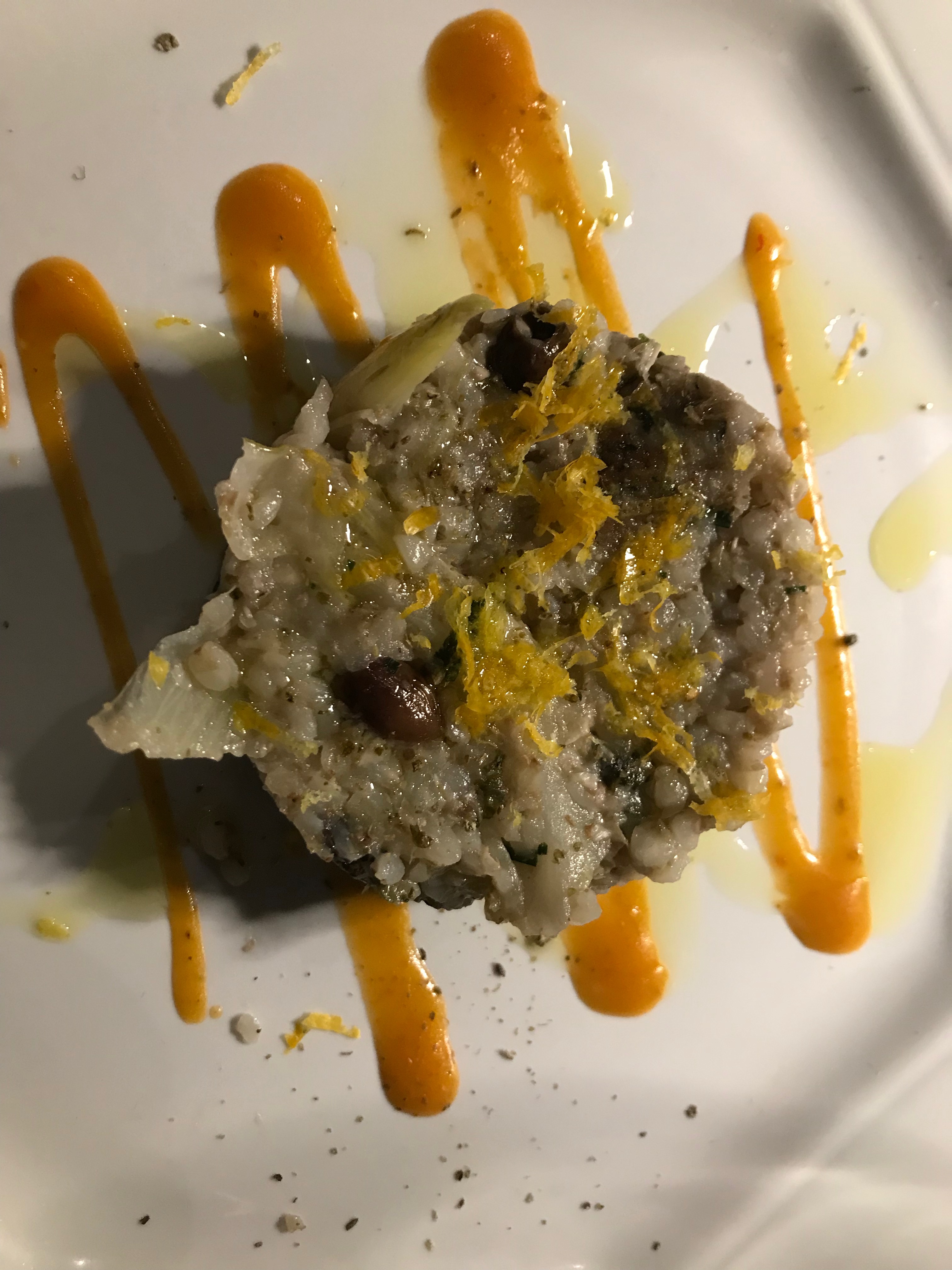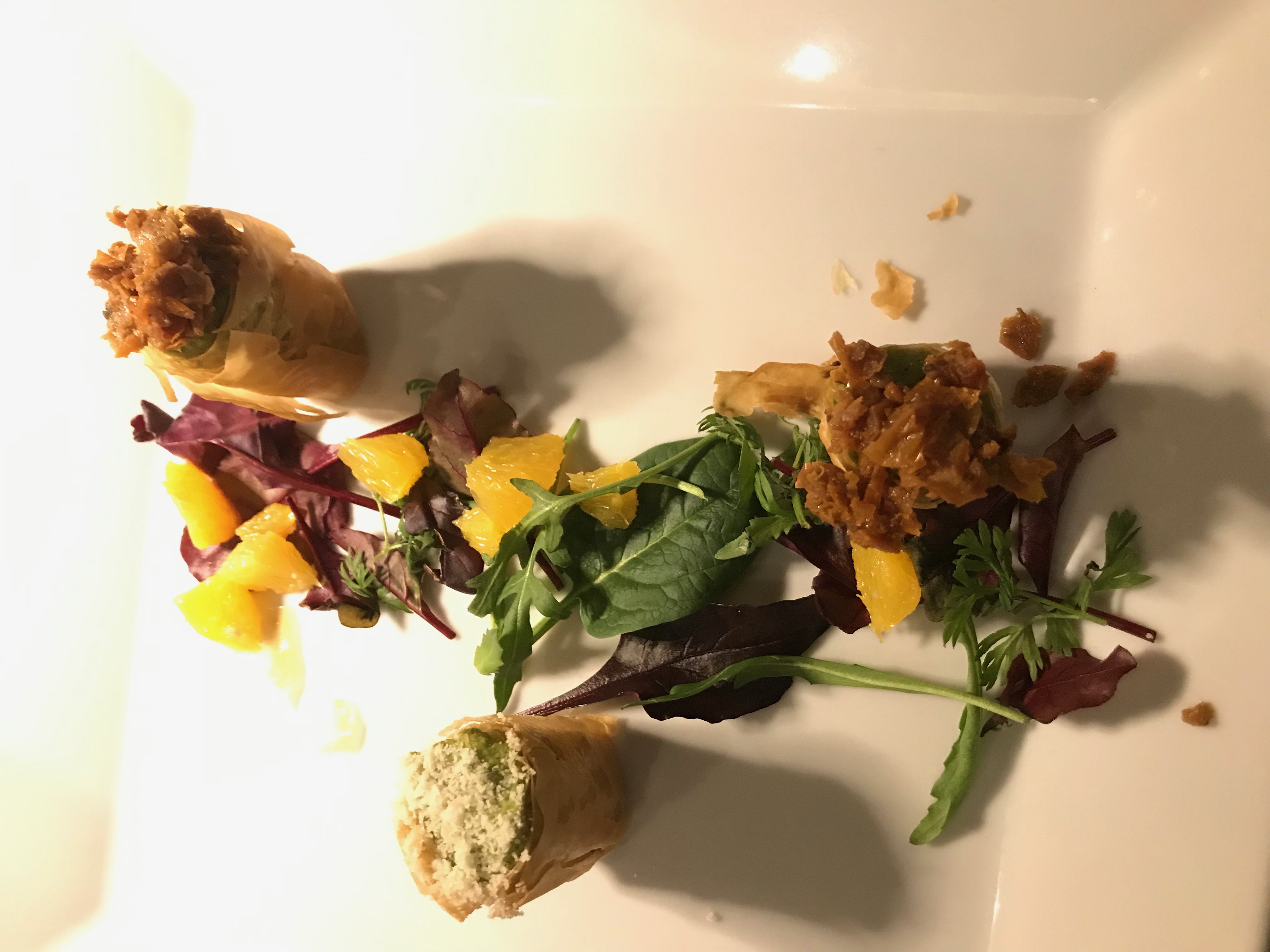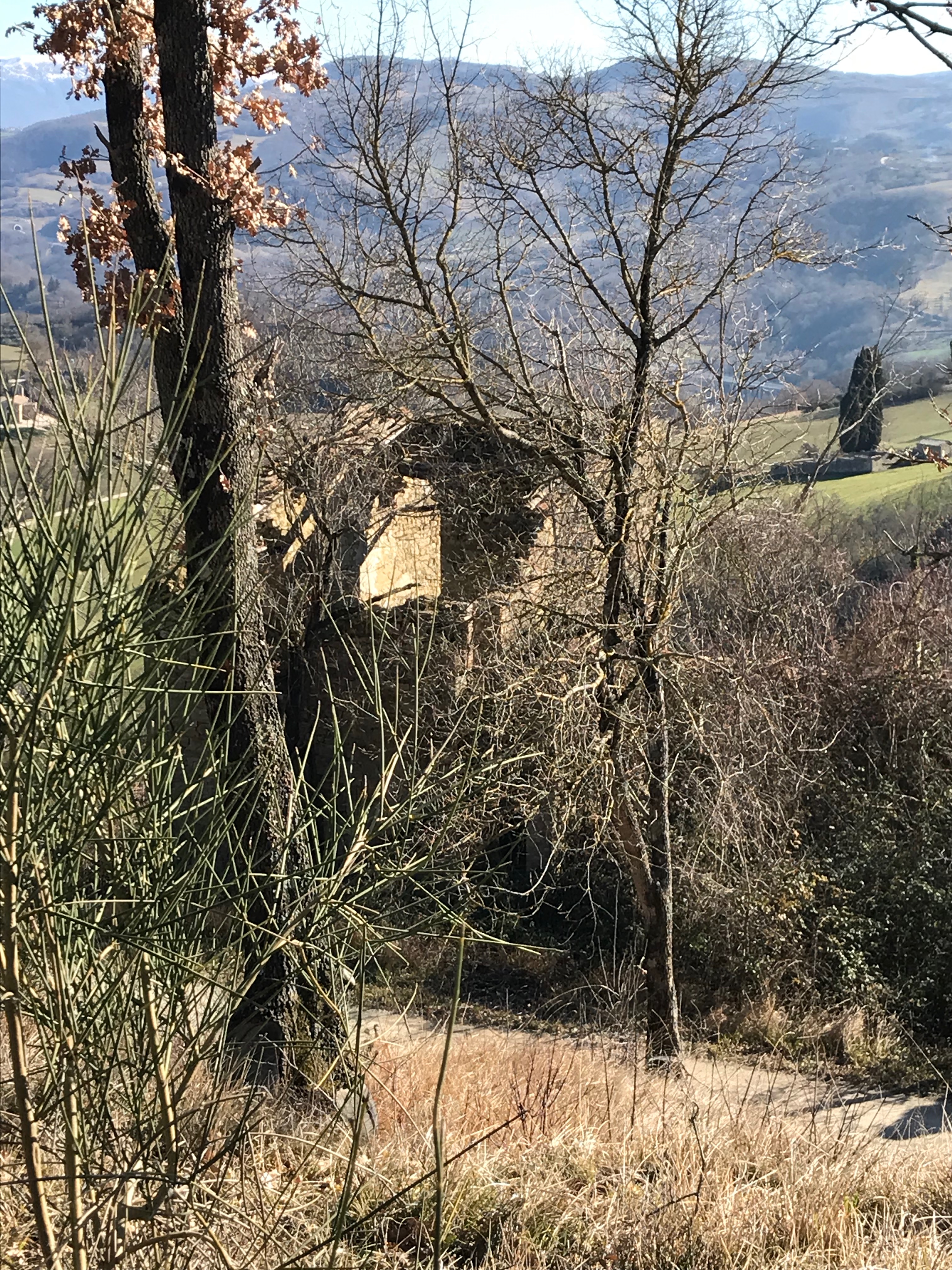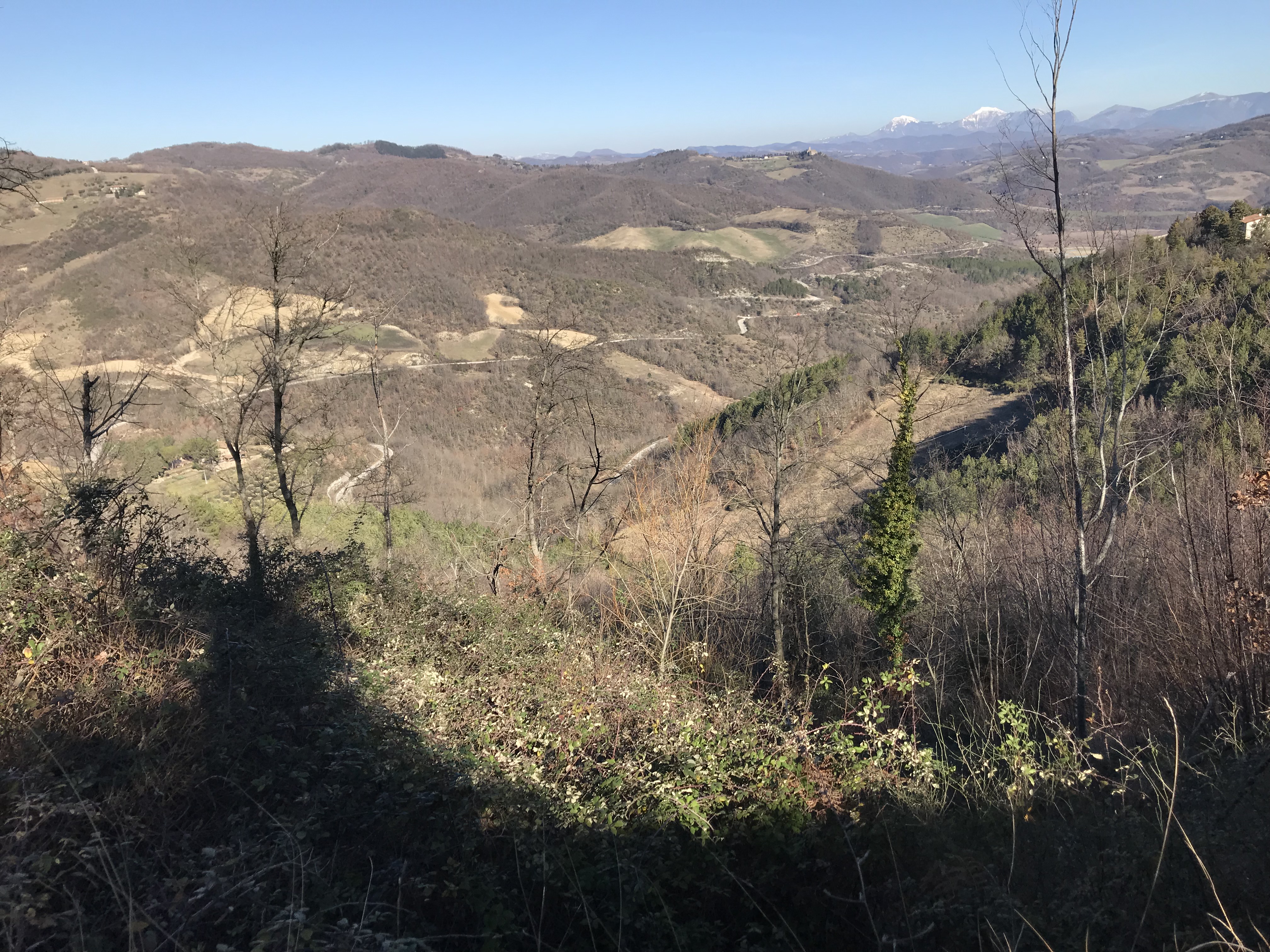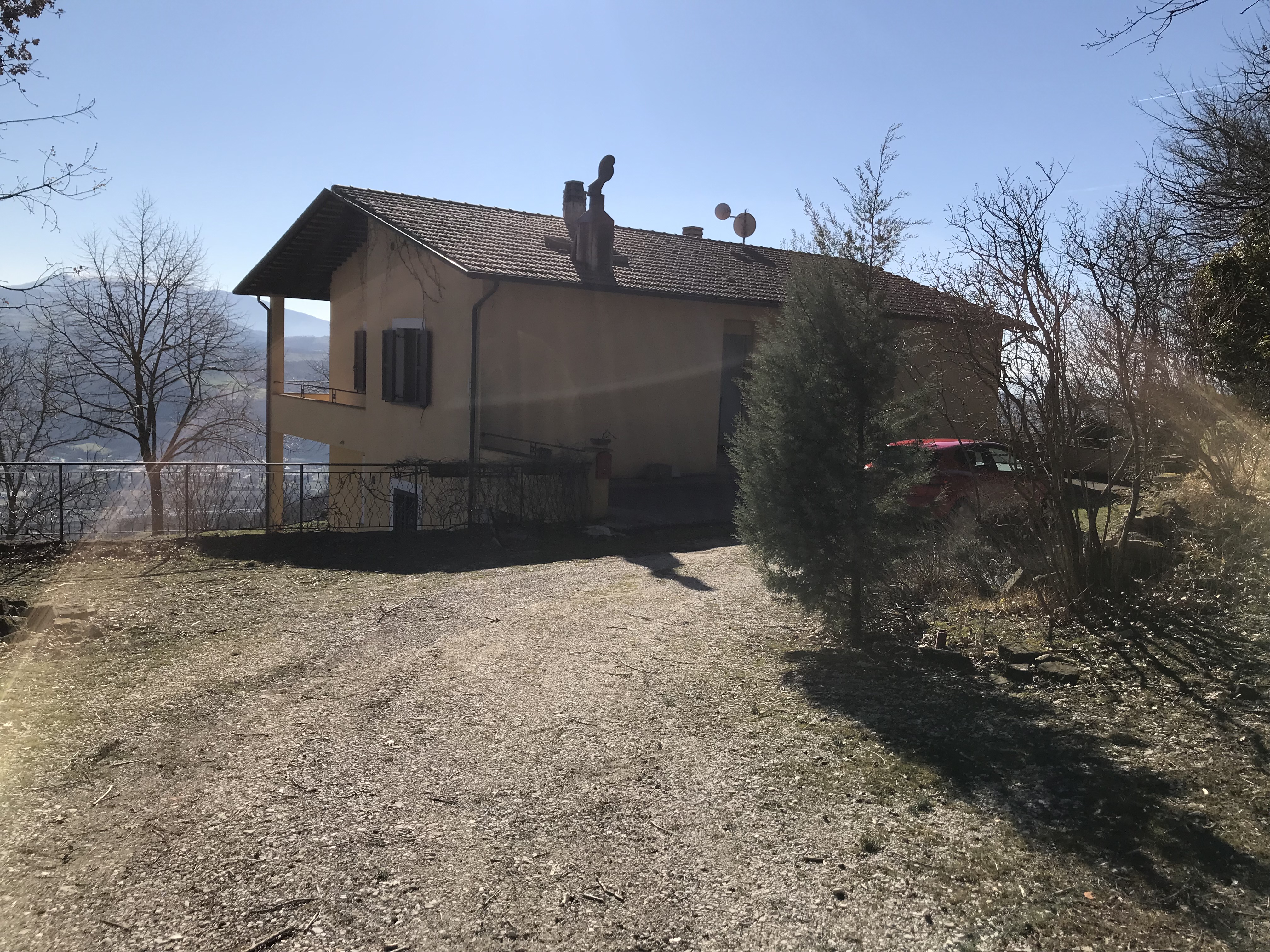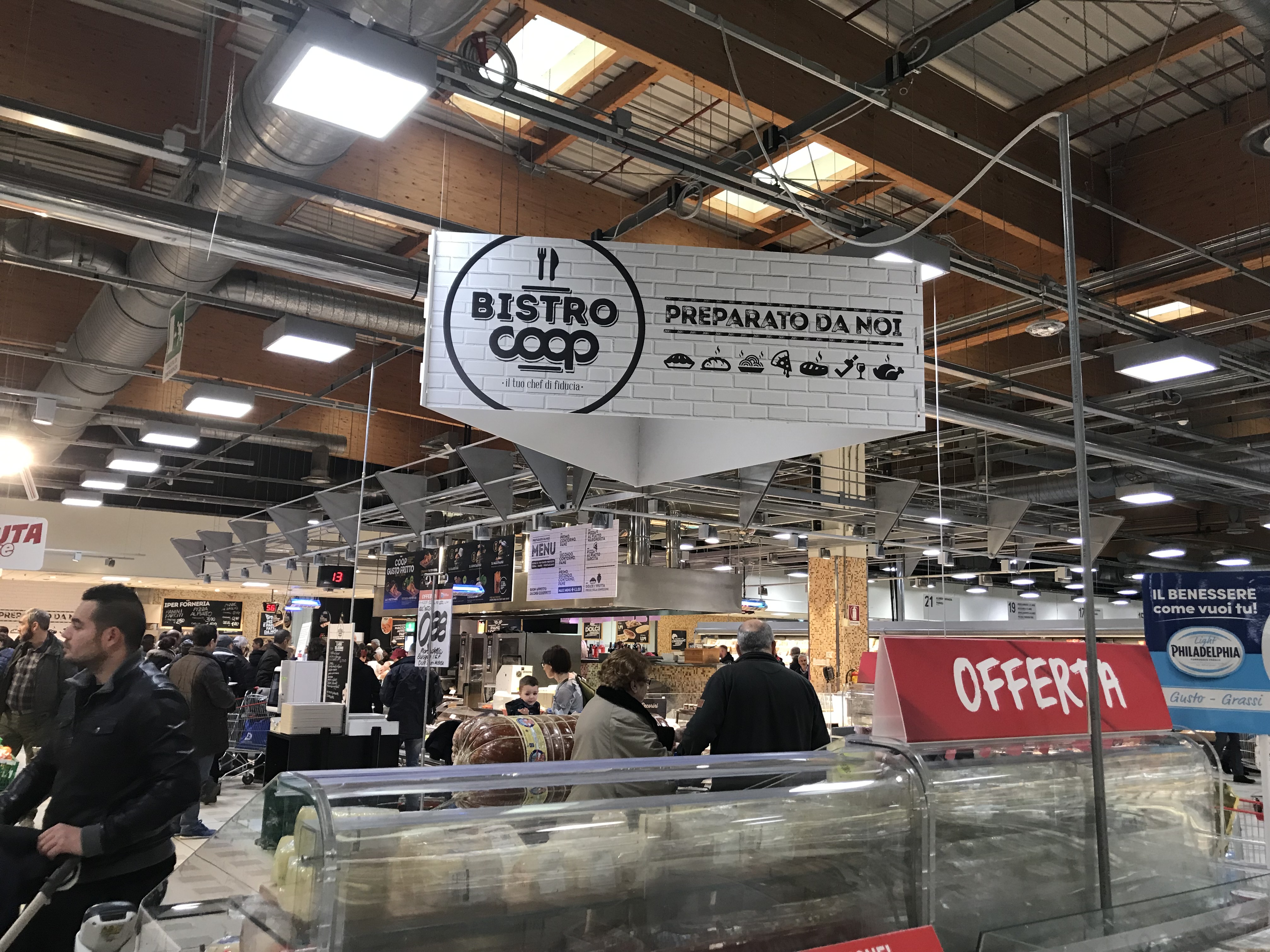I whined a couple of weeks ago about the dark, grey, rainy weather we’d been having and how it sent me wandering around the local Centro Commerciale (somehow “mall” sounds better that way). One of our friends here had a suggestion: She said we should visit the Antico Molino Bordoni, an old-fashioned flour mill outside Foligno, a few towns south of us. They use millstones, they’re powered by water, and their wheat and corn—for polenta—flours are better than anything you can buy in the supermarket.
Our friend, Letizia Mattiacci, was right. And she should know. Letizia is the Madonna del Piatto, a cooking school and B&B outside of Assisi. She gives great classes and puts up students, if they wish, in her beautiful old farmhouse up in the hills. She’s often quoted in the U.S. press whenever American travel writers somehow manage to wander from neighboring Tuscany to see what this little region next door is like. If you’re in Umbria and you like to cook, you should take a class from her. (In fact, you should make a special trip here to cook with her; it’s worth it.)
Of course, being my usual procrastinating self, we didn’t get around to visiting the mill until the weather turned sunny and springlike. No matter—it was a splendid way to spend President’s Day. We pointed the Renault’s nav system to the address, and off we went, dodging the usual maniacal black Audi drivers on the highway.
When we got near to the mill, we found a main road under construction. The exit we saw in real life didn’t match the exit on the navigation map; they apparently are turning a minor road into a limited access highway-type thing. So we breezed right by it. “Recalcolo percorso,” the female robot voice said. “Fate un inversione a U.” (Recalculating route…make a u-turn.) Ms. Renault was going apoplectic and I couldn’t stop giggling every time I heard “a U,” which sounds sort of like “ah-oooh!”
We doubled back, found the right way off, and drove down the street. It all looked unassuming, and we found a spot right out in front. You wouldn’t know by looking at it that there’s been a mill on this site since the 14th century. There was a little storefront with a few sample bags out on a shelf, along with a multilingual poster about the place. People were obviously at work in the workshops in back and off to the side, but it seemed like no one was taking care of the retail end. Or so we thought until the owner’s son came over to greet us. We told him that Letizia sent us, which brought a smile and an offer to show us around.
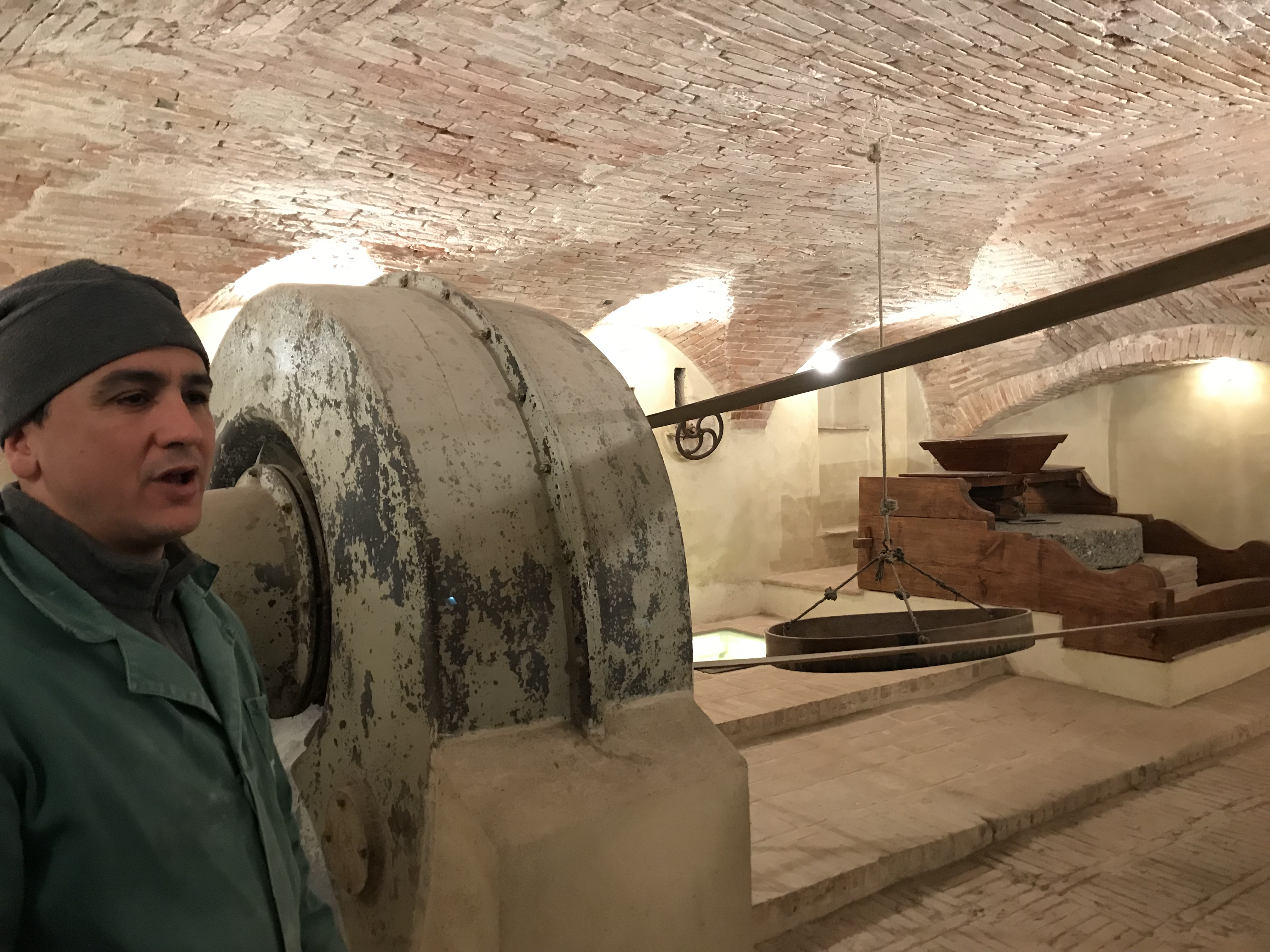
And what a show. I loved this stuff, being a food geek and a manufacturing geek. I love watching videos of assembly lines, and my father worked for a company that made electronic connectors, and I used to love going to work with him and watching the big presses and molding machines do their thing.
“Everything is run with renewable energy,” our guide started off. Being a mill, there’s a river nearby. It used to turn the turbines that turned the stones, and it still can all work that way. But they combined new electric mills with old-fashioned, real stones, and all the power is generated by the water rushing by. They rerouted the water to run their generators–a pretty neat trick.
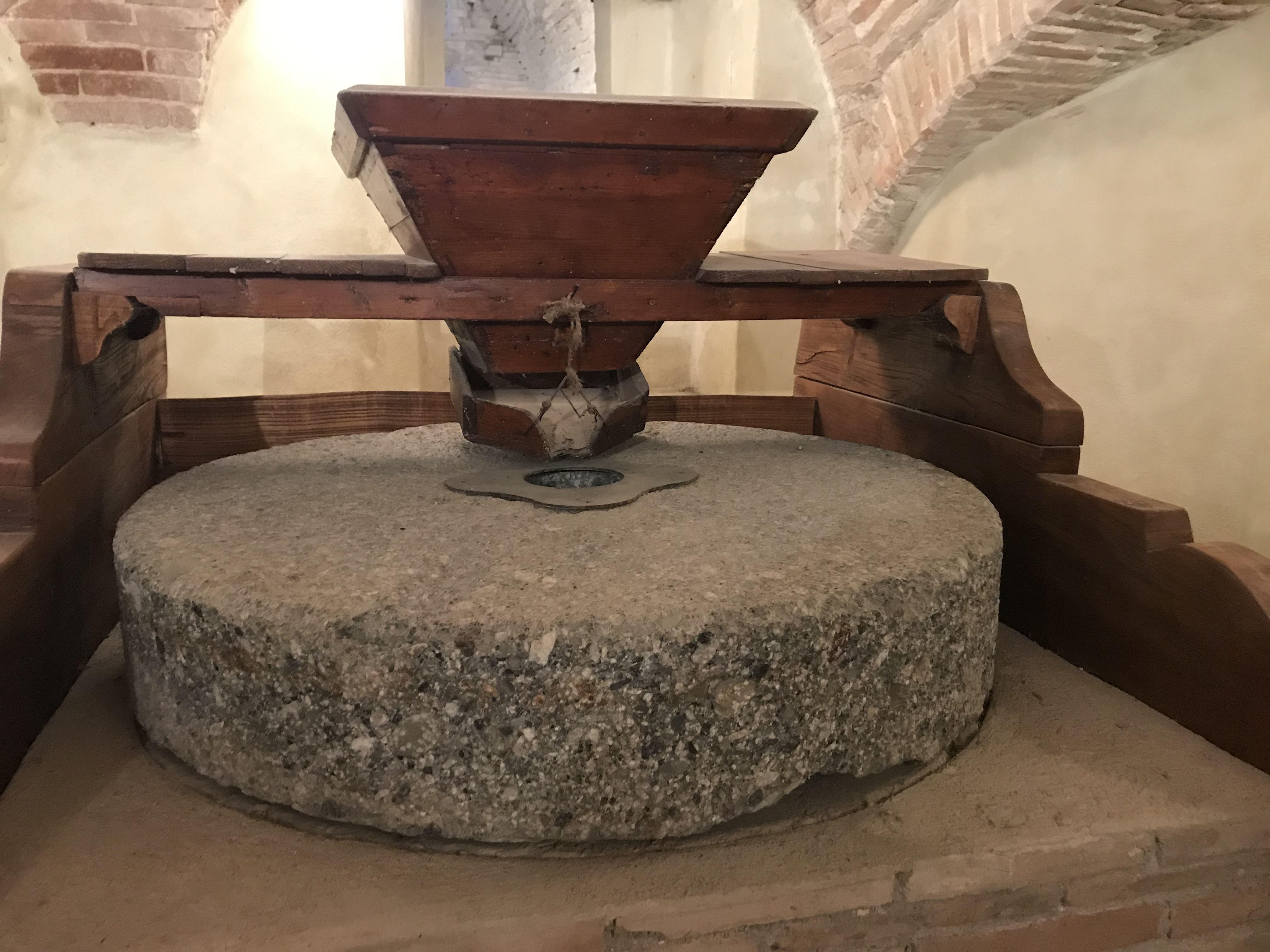

They still have all the old stuff though. We walked out to the street and down a stairway that looks like your typical New York City stairs to an apartment house boiler room and found ourselves in an stone and arch wonderland. The old millstones stood by waiting for another batch of farro or red corn, and the old water channel stood mute, waiting for the river to run through it. To be honest, the place would make a terrific party or dance venue, with some decent lights.
What really impressed though, is something I’ve seen time and again here: pride in the craft. Our guide obviously buys into the whole operation; it’s provided his family’s livelihood for a century. He knew everything about the place and its history and how everything works. We learned about the difference between what they do and what big producers do, from the texture of the millstones to the grains they use. These people use strictly local grain—he had a couple of ears of dried corn to show us what goes into the polenta. It was dark red and yellow, “more nutritious than the lighter corn the mass producers use.”
That pride isn’t limited to Italy, though it seems easier to run across small producers in this part of the country that’s dominated by small producers and artisans. You see it in New York City’s greenmarkets, too. You can spend hours talking to a farmer or cheesemaker if that’s your thing. Mass produced food may be cheaper, but it’s usually less intense. I find myself adding hardly anything to vegetables I buy at the greenmarket or in the local markets here, because the food doesn’t travel far to get here, so you get a more developed flavor.

We bought a bunch of different flours at the mill. We’re trying the polenta tomorrow. It’s not the instant, add hot water and stir kind. I’ll be stirring for about 45 minutes. I take Letizia’s word that it’s worth it. In fact, she stopped by yesterday with some handmade treats, one of which is the most intense orange marmalade I’ve ever tasted.
